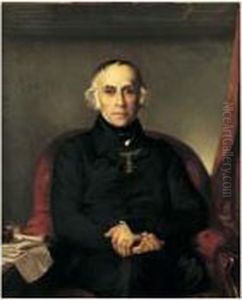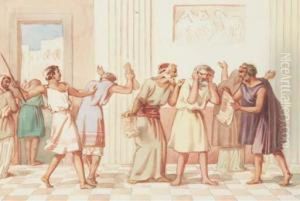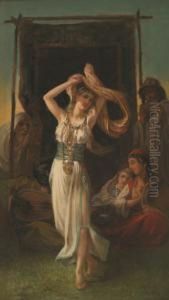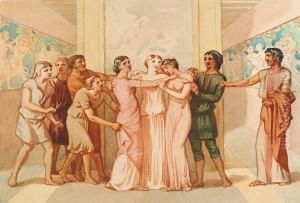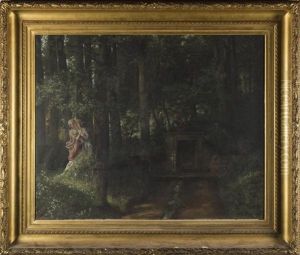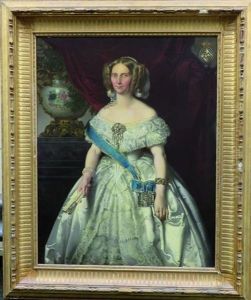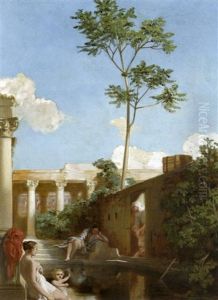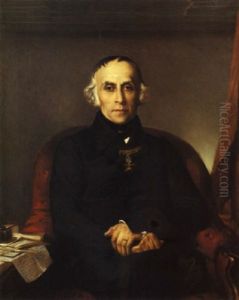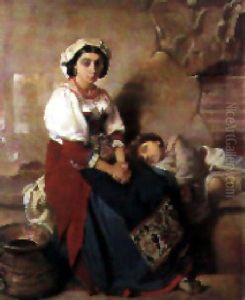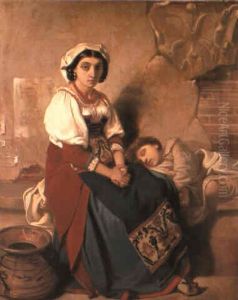Victor Louis Mottez Paintings
Victor Louis Mottez was a French painter and muralist who was born on February 13, 1809, in Lille, France. He was known for his work in the Neo-Grec style, which was part of a larger European movement that sought to revive the artistic principles and aesthetics of ancient Greece and Rome. Mottez's work is characterized by its clear forms, serene composition, and often classical subject matter.
Mottez's father, a manufacturer, was supportive of his artistic inclinations and sent him to study under the painter François Souchon in Lille. In 1828, Mottez moved to Paris to study at the École des Beaux-Arts under the tutelage of Léon Cogniet. His early works were influenced by the Romantic style, which was in vogue during his formative years, but he later shifted towards a more classical approach.
He won the Prix de Rome in 1837, which was a prestigious scholarship that allowed young French artists to study in Rome at the expense of the state. During his stay in Italy, Mottez was deeply influenced by the art of the Renaissance and by the frescoes of Raphael and Michelangelo. This experience had a profound effect on his style, and upon his return to France, he began to incorporate the Italianate qualities into his own work.
In the 1850s, Mottez received several commissions to decorate churches in Paris. Among his most notable works from this period are the frescoes he painted for the Church of St. Germain l'Auxerrois. His murals are characterized by their grandeur, use of color, and incorporation of allegorical and religious themes.
Mottez also painted portraits and scenes from mythology, literature, and history. His painting 'The Death of Lucretia' is an example of his classical subject matter, while 'Jeanne d'Arc' reflects his interest in French history. He was also a skilled portraitist, capturing the likeness and personalities of his subjects with sensitivity and depth.
Unfortunately, as styles changed, Mottez's classical approach fell out of favor with the advent of Impressionism and other modern movements. Despite this, he continued to work and teach, passing on his knowledge and techniques to a new generation of artists.
Victor Louis Mottez died on June 7, 1897, in Saint-Mandé, France. Although his fame declined towards the end of his life and after his death, his work has been reassessed in recent years, and he is now recognized as an important figure in 19th-century French art. His contributions to mural painting and his mastery of Neo-Grec style remain significant, offering insight into the transitions within French art from Romanticism to Neoclassicism and beyond.
